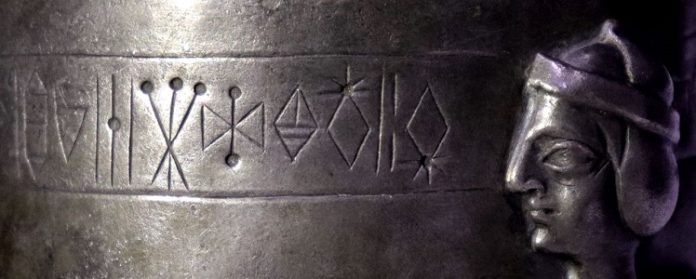Fra poco sarà possibile conoscere un po’ meglio i popoli che abitavano la terrà nei secoli passati. Dopo più di quattromila anni è infatti finalmente possibile leggere l’elamico lineare, una scrittura antichissima utilizzata dagli Elamiti (secondo la tradizione biblica, discendenti di Elam, uno dei nipoti di Noè) nel sud dell’Iran tra il 2300 e il 1900 a.C. A trovare la chiave di questo enigmatico sistema di scrittura, che fino ad oggi nessuno era riuscito a decifrare, è stato un gruppo internazionale di cinque studiosi di cui fa parte anche Gianni Marchesi, professore di Assiriologia al Dipartimento di Storia Culture Civiltà dell’Università di Bologna. La storia di questa scoperta ha inizio nel 1903, quando gli scavi francesi nella città di Susa, nell’Iran sud-occidentale, portano alla luce i primi documenti scritti in una misteriosa scrittura denominata elamico lineare dagli studiosi, per distinguerla dall’altra scrittura in uso in antico in quella regione: il cuneiforme di origine mesopotamica. Da allora, l’elamico lineare ha catturato a più riprese l’attenzione degli studiosi resistendo a numerosi tentativi di decifrazione, tra cui quello dell’illustre linguista e lincèo Piero Meriggi. Questa scrittura è stata utilizzata per scrivere testi in lingua elamica fino a poco dopo il 1900 a.C., quando venne soppiantata dal cuneiforme mesopotamico. Ed è stato proprio l’uso di due differenti sistemi di scrittura (elamico lineare e cuneiforme) per notare la stessa lingua (l’elamico) che ha reso possibile la decifrazione dell’elamico lineare. Una volta decifrato, l’elamico lineare si è rivelato essere un sistema di scrittura piuttosto diverso da quelli coevi come il cuneiforme mesopotamico o il geroglifico egiziano. Non è infatti un sistema logo-sillabico come questi ultimi, in cui i simboli grafici rappresentano sia sillabe sia intere parole.
(NoveColonne ATG)
Soon it will be possible to get to know a little better the peoples who inhabited Iran in past centuries. After more than four thousand years it is finally possible to read the linear elamic, ancient writing used by the Elamites (according to biblical tradition, descendants of Elam, one of Noah’s nephews) in southern Iran between 2300 and 1900 BC. To find the key to this enigmatic writing system, which until now no one had been able to decipher, was an international group of five scholars which also includes Gianni Marchesi, professor of Assyriology at the Department of History Cultures Civilization of the University of Bologna. The history of this discovery begins in 1903, when French excavations in the city of Susa, in southwestern Iran, bring to light the first documents written in a mysterious writing called linear elamic by scholars, to distinguish it from the other writing in use in ancient times in that region: the cuneiform of Mesopotamian origin. Since then, the linear elamic has repeatedly captured the attention of scholars resisting numerous attempts at deciphering, including that of the illustrious linguist and lincèo Piero Meriggi. This script was used to write texts in the Elamic language until shortly after 1900 BC, when it was supplanted by the Mesopotamian cuneiform. And it was precisely the use of two different writing systems (linear and cuneiform elamic) to notice the same language (the elamic) that made it possible to decipher the linear elamic. Once deciphered, linear elamic turned out to be a rather different writing system from contemporary ones such as Mesopotamian cuneiform or Egyptian hieroglyph. It is not in fact a logo-syllabic system like the latter, in which the graphic symbols represent both syllables and entire words.







